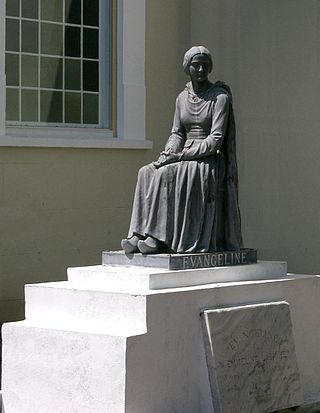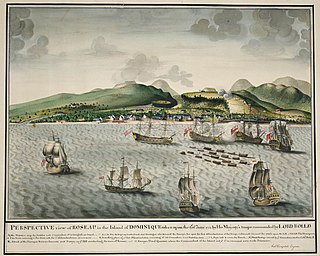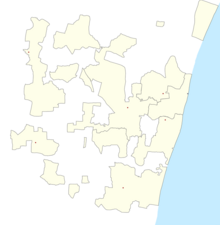
1760 (MDCCLX) was a leap year starting on Tuesday of the Gregorian calendar and a leap year starting on Saturday of the Julian calendar, the 1760th year of the Common Era (CE) and Anno Domini (AD) designations, the 760th year of the 2nd millennium, the 60th year of the 18th century, and the 1st year of the 1760s decade. As of the start of 1760, the Gregorian calendar was 11 days ahead of the Julian calendar, which remained in localized use until 1923.

HMS Bellona was a 74-gun Bellona-class third-rate ship of the line of the Royal Navy. Designed by Sir Thomas Slade, she was a prototype for the iconic 74-gun ships of the latter part of the 18th century. "The design of the Bellona class was never repeated precisely, but Slade experimented slightly with the lines, and the Arrogant, Ramillies, Egmont, and Elizabeth classes were almost identical in size, layout, and structure, and had only slight variations in the shape of the underwater hull. The Culloden-class ship of the line was also similar, but slightly larger. Thus over forty ships were near-sisters of the Bellona." Bellona was built at Chatham, starting on 10 May 1758, launched on 19 February 1760, and commissioned three days later. She was the second ship of the Royal Navy to bear the name, and saw service in the Seven Years' War, American Revolutionary War and the Napoleonic Wars.

Events from the year 1760 in Canada.
Guillaume Joseph Hyacinthe Jean-Baptiste Le Gentil de la Galaisière was a French astronomer who discovered several nebulae and was appointed to the Royal Academy of Sciences. He made unsuccessful attempts to observe the 1761 and 1769 transits of Venus from India.
HMS Norfolk was a 74-gun third-rate ship of the line of the Royal Navy, and the second ship to bear the name. She was built by Adrian Hayes at Deptford Dockyard and launched on 8 December 1757. She was active during the Seven Years' War.

The Battle of Pondicherry was a naval battle between a British squadron under Vice-Admiral George Pocock and French squadron under Comte d'Aché on 10 September 1759 off the Carnatic coast of India near Pondicherry during the Seven Years' War. Pocock attempted to intercept d'Aché, whose squadron was carrying reinforcements and money for the French forces in Pondicherry. The battle was indecisive, but d'Aché successfully completed his mission when his fleet arrived in Pondicherry on 15 September. However, these forces were insufficient to reverse the declining French situation in the Carnatic.

The Battle of Wandiwash was a battle in India between the French and the British in 1760. The battle was part of the Third Carnatic War fought between the French and British colonial empires, which itself was a part of the global Seven Years' War. It took place at Vandavasi in Tamil Nadu. Having made substantial gains in Bengal and Hyderabad, the British, after collecting a large amount of revenue, were fully equipped to face the French in Wandiwash, whom they defeated.

Pondicherry, now known as Puducherry, is the capital and most populous city of the Union Territory of Puducherry in India. The city is in the Puducherry district on the southeast coast of India and is surrounded by the Bay of Bengal to the east and the state of Tamil Nadu, with which it shares most of its culture, heritage, and language.

The Carnatic wars were a series of military conflicts in the middle of the 18th century in India's coastal Carnatic region, a dependency of Hyderabad State, India. The first Carnatic wars were fought between 1740 to 1748
The 84th Regiment of Foot was a British regiment raised for service in India with the British East India Company.

HMS Dublin was a 74-gun third rate ship of the line of the Royal Navy, built by Adam Hayes at Deptford Dockyard and launched on 6 May 1757.

The Invasion of Dominica was a British military expedition to capture the Caribbean island of Dominica in June 1761, as part of the Seven Years' War.
HMS Newcastle was a 50-gun fourth rate ship of the line of the Royal Navy, built by Peirson Lock at Portsmouth Dockyard and launched in 1750 for active service during the Seven Years' War against France. Principally engaged in defending British settlements in India, she was wrecked in a storm off Pondicherry in January 1761.
Siege of Pondicherry may refer to one of the following:

France was one of the leading participants in the Seven Years' War which lasted between 1754 and 1763. France entered the war with the hope of achieving a lasting victory against Prussia, Britain, and their German allies and with the hope of expanding its colonial possessions.
Anne Antoine, Comte d’Aché was a French naval officer who rose to the rank of vice admiral. He is best known for his service off the coast of India during the Seven Years' War, when he led the French fleet at the Battle of Cuddalore and Battle of Pondicherry. He also failed to provide adequate naval support to French troops attempting to capture Madras in 1759. After he received rumours of a British attack on the major Indian Ocean naval base Mauritius he did not go to the aid of the French forces in Pondicherry which was under siege. Pondicherry, the French capital in India, subsequently surrendered leaving the French with no influence upon the Indian Subcontinent. After the war he retired to Brest where he died in 1780.

Montreal Park is a development in Sevenoaks in Kent which was formerly the home of Lord Amherst, Commander-in-Chief of the Forces. It was named after his conquest of Montreal in 1760.

The siege of Pondicherry was a colonial military operation in the early stages of the French Revolutionary Wars. Britain and France both controlled colonies on the Indian Subcontinent and when the French National Convention declared war on Britain on 1 February 1793, both sides were prepared for conflict in India. British India was centred on the principal ports of Bombay, Madras and Calcutta, administered by the East India Company. French India was governed from Pondicherry on the Coromandel Coast. British forces in India were considerably stronger than the French, with the British Indian Army supported by British Army detachments and a Royal Navy squadron under Rear-Admiral William Cornwallis. Pondicherry's defenses were strong, but the garrison was too small to effectively man the walls, and although a French frigate squadron was stationed at the distant Île de France, it was unable to effectively protect the French Indian coast.

The Peace and Friendship Treaties were a series of written documents that Britain signed bearing the Authority of Great Britain between 1725 and 1779 with various Mi’kmaq, Wolastoqiyik (Maliseet), Abenaki, Penobscot, and Passamaquoddy peoples living in parts of what are now the Maritimes and Gaspé region in Canada and the northeastern United States. Primarily negotiated to reaffirm the peace after periods of war and to facilitate trade, these treaties remain in effect to this day.
The 96th Regiment of Foot was a short-lived infantry regiment of the British Army which was raised during the Seven Years' War and existed from 1760-1763.














